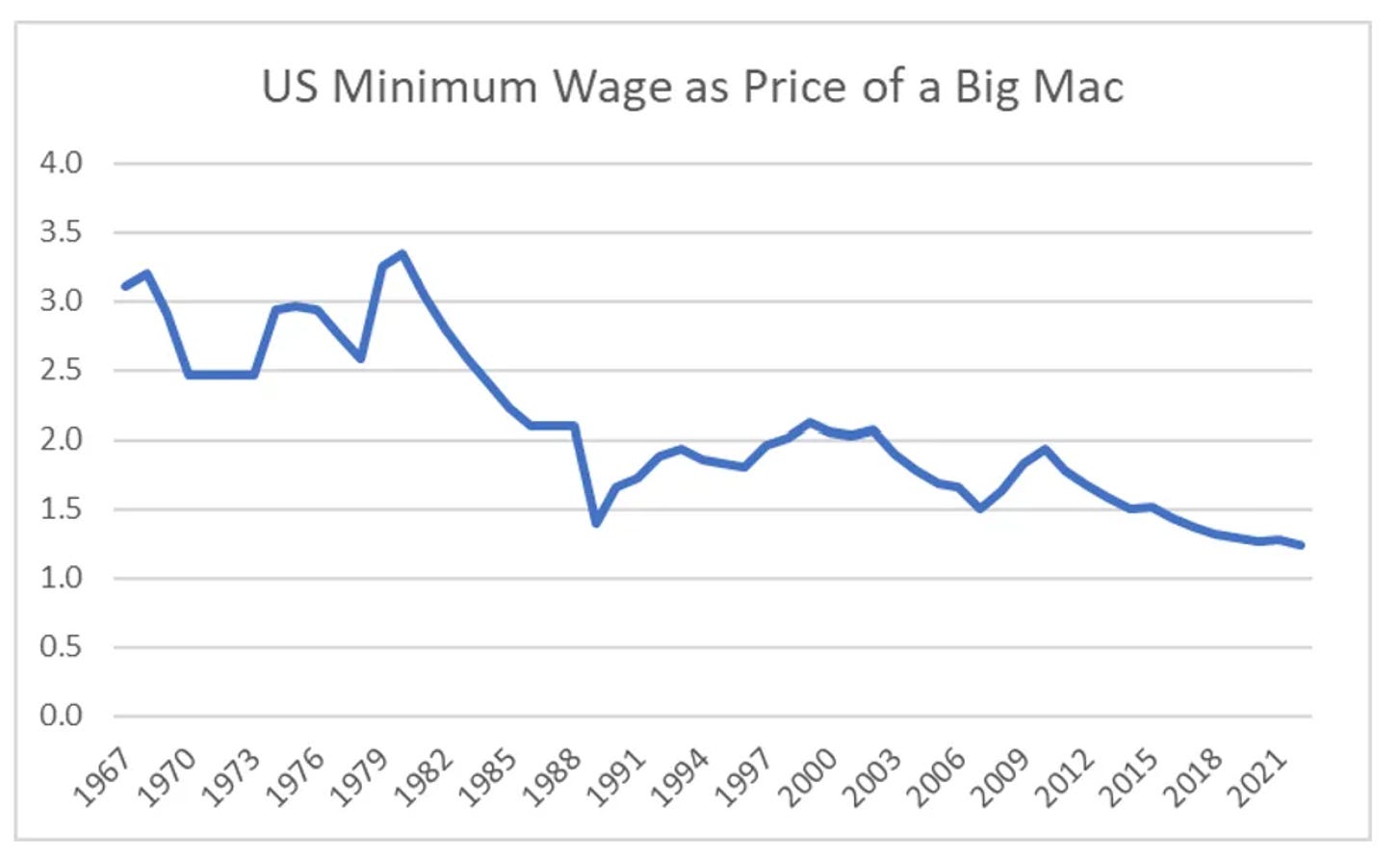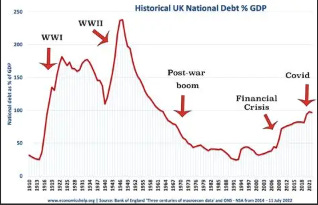Just a very short note.
Michael Green has written a very good note on how the poverty line has failed in the US. You can read it here.
There is no way to sugar coat this - Michael works far harder than me. He has systematically broken down all costs, and then adjusted them over time to show that the official poverty line is too low in the US, especially compared to the pinnacle of US worker focuses policy in the 1960s.
One issue that everyone raises, is that it is hard to adjust for improvement in quality over time. The computers we used in the 1980s, where black and white, and loaded from tape, with no internet connectivity. How can you compare?
But one bit of work I did a while ago was comparing the US minimum wage to the price of a Big Mac. In the 1960s and 1970s, you had a minimum wage that was equal to 3 Big Macs. If you thinking about someone working a low skill job, three Big Macs an hour meant you had another money for food and everything else from a hard days works. Last time I updated it in 2022, we were closer to 1.
These days, many fast food workers require food stamps to make ends meet. Arkansas is not an outlier here - you can read the report yourself.
Of course, minimum wages in many cities have risen well above US minimum wage, which remains at USD 7.25 and hour. But what the change in Big Mac to the minimum wage, and Michael Green’s note both say, are really the same thing. After the Great Depression, and two World Wars, policy makers decided that wage led growth was the key. As long as real wages rose, then the economy would be okay. But from the 1980s, we reverted to free market policies, and real wages began to fall. When I look at the world today, policy makers are groping towards real wage growth focused policies - reducing immigration, raising tariffs, large fiscal deficits - but find themselves unable to grasp the nettle of allowing prices for goods to fall relative to wages, as they would hurt asset owners. How profitable would McDonalds be today is the minimum wage could buy three Big Macs again? What would interest rates be if US minimum wage had risen in line with the increase seen from 1939 to 1980? Over that period it rose from USD 0.35 an hour to USD 3.25 - or a 1000% increase over 40 years. If we had kept that rate of increase, wages would be USD325 a hour today. That seems excessive, but then again the minimum wage has only risen by 100%. A Big Mac cost about 1.25 USD in 1980 - and sets you back USD 5 today, a 400% increase.
One great (?!?) thing about wage inflation, it does help balance government budgets. The post World War II focus on rising wages really helped the UK pay off its debts.
Logically, wage inflation seems the answers to almost every economic/political problem facing voters now - high property prices, income inequality, excessive government debt (maybe even low fertility rates?). But for some reason, both populists and left wing governments are yet to achieve it. But I think it is on its way… well that is what gold is telling me.
The other option is depression - that is falling asset prices. I think that is politically unacceptable. When everybody know the answer, eventually someone will come along and implement these policies. Just a matter of time.















